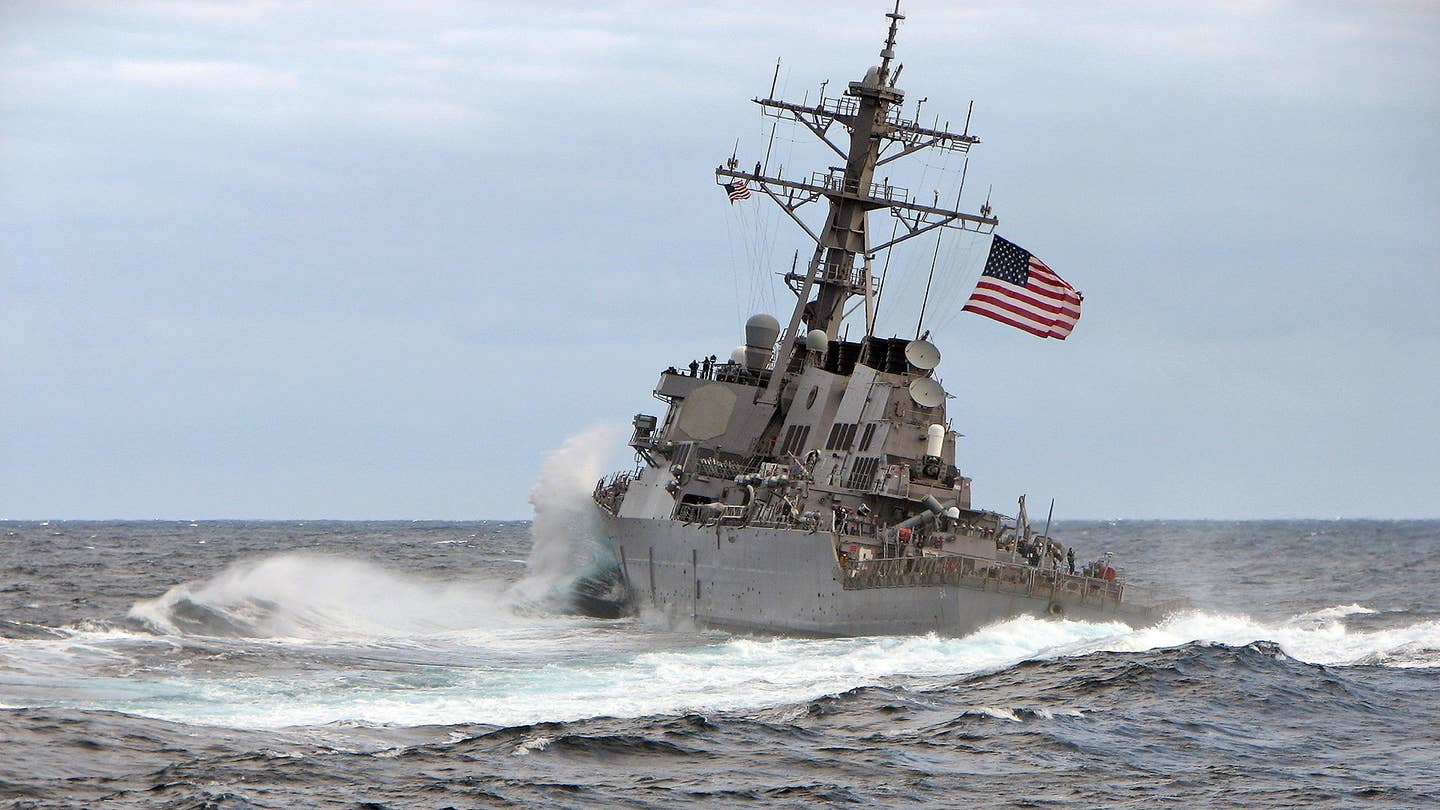USS Carney Shoots Down Missiles, Drones Fired From Yemen
The missiles and drones were fired north by Iranian-backed Houthi militants who have threatened to attack Israel over the crisis in Gaza.

The U.S. Navy's Arleigh Burke class destroyer USS Carney shot down a trio of land-attack cruise missiles and multiple drones launched by Iranian-backed Houthi militants in Yemen earlier today. The Houthis are among the groups that have threatened retaliation against Israel, as well as the United States, over ongoing operations targeting groups in the Gaza Strip.
Air Force Brig. Gen. Patrick Ryder, the Pentagon's top spokesman, confirmed the interceptions and said the Houthi attacks may still be "ongoing" at a press conference today. CNN had been the first to report the incident citing unnamed U.S. officials.
"The crew of the guided-missile destroyer USS Carney operating in the northern Red Sea earlier today shot down three land attack cruise missiles and several drones that were launched by Houthi forces in Yemen," Ryder said. "This action was a demonstration of the integrated air and missile defense architecture that we've built in the Middle East, and that we are prepared to utilize whenever necessary to protect our partners and our interests in this important region."
The Houthis have an extensive array of long-range kamikaze drones, as well as cruise and ballistic missiles, that it has acquired with Iranian assistance and that could potentially reach Israel
"There were no casualties to U.S. forces and none that we know of to any civilians on the ground," he added.
How the USS Carney, which only entered the Red Sea yesterday after transiting through the Suez Canal from the Mediterranean, neutralized the missiles and drones is unclear. It can fire a variety of surface-to-air missiles from the cells of its Mk 41 Vertical Launch System arrays. ABC News has reported that variants of the SM-2 surface-to-air missile were employed.
The warship is also in the 'Rota' configuration that is unique to Arleigh Burke class destroyers forward deployed to Europe, which includes extra tailored defenses in the form of SeaRAM and electronic warfare capabilities. The ships also retains its Phalanx close-in weapon system, as well.
The reports so far have been cautious in describing the Houthis' potential intent with the missiles and drones. The Carney seems to have not been the target, though the Houthis have deliberately attempted to strike U.S. warships repeatedly in the region in the past with anti-ship missiles.
Pentagon Press Secretary Ryder said that the missiles and drones appeared to be heading north and may have been bound for Israel. The War Zone has long highlighted the potential dangers Israel faces from missile and other strikes originating from the south and some of the unique measures Israel has taken to deal with those threats.
The USS Carney is currently attached to the Gerald R. Ford Carrier Strike Group. This is one of a large number of U.S. military assets that were repositioned or deployed in the wake of unprecedented terrorist attacks in southern Israel perpetrated by the Palestinian extremist group Hamas earlier this month, which led to the current assault on the Gaza Strip.
The U.S. government says the ostensible purpose of these forces is to deter other groups, especially Iranian-backed proxies like the Houthis and especially Lebanon's Hezbollah, as well as Iran itself, from attacking Israel. There continue to be very real and serious concerns about the potential for a regional conflagration to erupt.
These shootdowns also follow a number of drone attacks launched by Iranian-backed groups on bases in Iraq and Syria over the past few days. Just recently, unconfirmed reports of new such attacks on targets in Syria have begun to emerge.
Ground-based air defenses were able to intercept at least some drones during the attacks earlier this week. Some still made it through, causing minor injuries to U.S. personnel. Press Secretary Ryder also disclosed today that a contractor employed by the U.S. military died of a heart attack during one incident yesterday that turned out to be a false alarm.
When it comes to the Houthi missiles and drones, whatever they might have been aimed at, they completely underscore these fears of a potential regional conflict.
The War Zone will continue to update this story as more information becomes available.
Contact the author: joe@thedrive.com
